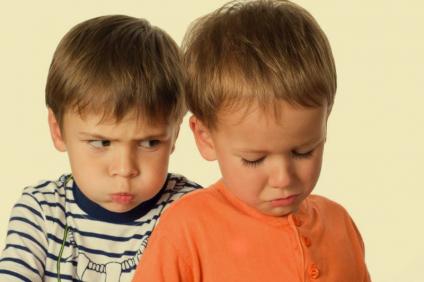By Amy Blaisdell

EDC’s Senior Scientists Ron Slaby (PhD) and Kim Storey (EdD) recently shared their expertise on preventing bullying in the early years with SAMHSA’s Project LAUNCH grantees. Learn why bullying deserves attention early on.
Bullying among older students receives a lot of attention, but it is often overlooked among children ages 2–5. Yet, these early years are an important time for children to develop positive ways of relating to their peers. Helping young children develop these skills can prevent behavioral patterns that escalate into more serious bullying behaviors later on.
“When children develop competencies, we would hope they use these to help the less powerful,” Dr. Slaby explains, “but the exact opposite happens with bullying. When children develop power and then see they can use it to hurt others, this should be a signal for all those who work in social-emotional learning to ‘nip it in the bud,’ or else it spreads to where others pick up on it, too.”
One way that adults can help stop this cycle is by teaching young children how to be empathetic. Slaby suggests that adults “label feelings, discuss how children who get hurt might feel, and discuss the difference between helping and hurting. Tell stories where children can identify with the child being hurt.” Teaching young children to identify with their peers and understand feelings, as Slaby suggests, can help to prevent the types of bullying typically seen at this age in settings where young children socialize.
For many children, early child-care settings represent the first time that the child is part of a continuous social experience. While these settings can be places to create friendships and learn, they can also be venues where a child experiences negative social behaviors. By being aware of what bullying looks like in the early years, adults can help to ensure that children have positive experiences in early child-care settings.
As discussed in Bullying in Different Contexts, researchers have found that young children are more likely than older students to be victims of bullying and to inflict “direct” aggression on their peers. Direct aggression is “face to face” and can consist of name-calling, physical harm, or social exclusion, such as a child telling another that he or she is not welcome to play with a group of peers. Indirect aggression, such as spreading rumors, requires more advanced social and cognitive abilities and is more common among older children.
While direct aggression may appear more explicit and therefore easier to address, it is important to keep in mind that not all direct aggression can be defined as bullying. Dr. Storey explained to Project LAUNCH grantees that for a behavior to be considered “bullying,” it must be a form of emotional or physical abuse that has three defining characteristics:
- Intentional: The behavior is deliberately harmful or threatening
- Repeated: The same person is targeted, over and over
- An abuse of power: The aggressor is using power to hurt
These concepts can be difficult for young children to grasp. In fact, young children are likely to over-report bullying because they interpret any aggressive behavior as bullying even when harm was not intended.
Still, Slaby stresses that it is important for children to develop the skills to deal with bullying when it does occur—one of which is assertiveness. Slaby advises that children should “not submit to bullying or counter-attack it. Rather, they should know how to stand up with full confidence and assert their rights within that situation in a way that is supported by adults—and in a way that is non-violent and non-submissive.”
Storey agrees: “We need to give children who are being bullied the tools to stand up to the bully in an assertive, not aggressive way. Teachers and caregivers need to keep this in mind to help reduce bullying.”
Teachers, for example, can help integrate new students—who are often targets of bullying—into social groups to avoid exclusion. Storey also recommends that parents and caregivers have regular conversations with children about the social aspects of their school days to help identify bullying-related concerns before situations escalate.
To learn more about what you can do to prevent bullying in the early years, visit Eyes on Bullying and download the Eyes on Bullying toolkit.
How have your schools and communities addressed bullying during the early years? We encourage you to share your thoughts, strategies, and lessons learned by adding your comments below.
Don’t miss out—sign up here to receive our blog, Promote Prevent Perspectives, in a weekly email!